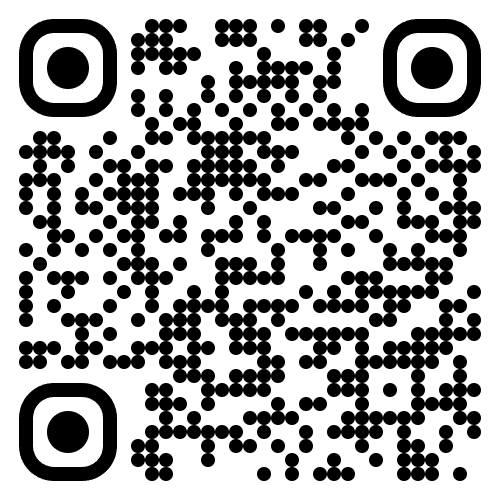Week 1
Introduction to the Human Visual System and the Eye-tracking Method
Today's roadmap
- The basics of eye-tracking
- Eye-tracking and visual attention
- Application of the eye-tracking method in language research: an overview
The basics of eye-tracking
The basics of eye-tracking
The human visual system

The basics of eye-tracking
The human visual system

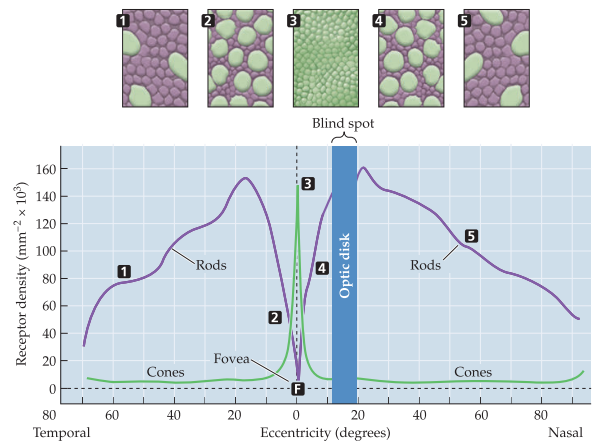
The basics of eye-tracking
The human visual system
- Cones - photorecepter cells responsible for detailed vision - are the most dense at the fovea.
- (Rods - responsible for dim-light vision and night vision.)
- Visual acuity is the highest around the fovea.
- To compensate for lessened acuity outside the fovea, we must frequently move our eyes .
The basics of eye-tracking
Types of eye movements
The basics of eye-tracking
Types of eye movements
- Fixations
- Saccades
- Smooth pursuits
The basics of eye-tracking
Types of eye movements
- Fixations
- Saccades
- Smooth pursuits
The basics of eye-tracking
Types of eye movements
- Fixations
- Saccades
- Smooth pursuits
The basics of eye-tracking
Modern eye-tracking techniques
The basics of eye-tracking
Modern eye-tracking techniques
Two types of eye movement measurements:
- The position of the eye relative to the head
- The point of regard (the orientation of the eye in space)
The basics of eye-tracking
Modern eye-tracking techniques
Two types of eye movement measurements:
- The position of the eye relative to the head
- The point of regard (the orientation of the eye in space)
The basics of eye-tracking
Modern eye-tracking techniques
Modern techniques to measure the point of regard:
- Video-based corneal reflection eye trackers
- Corneal-reflection (of an infra-red light source)
- Pupil center
The basics of eye-tracking
Modern eye-tracking techniques
Modern techniques to measure the point of regard:
- Video-based corneal reflection eye trackers
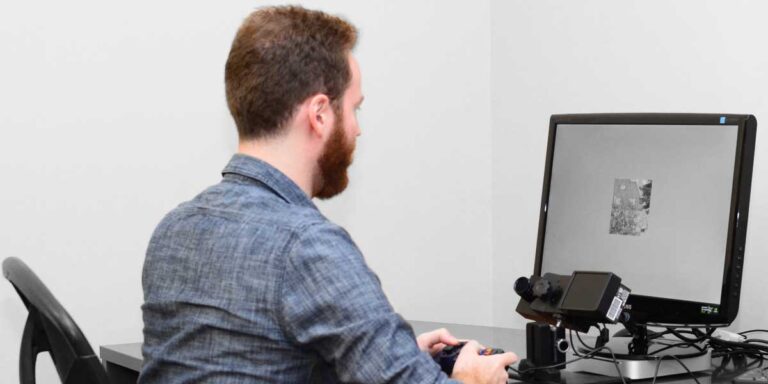
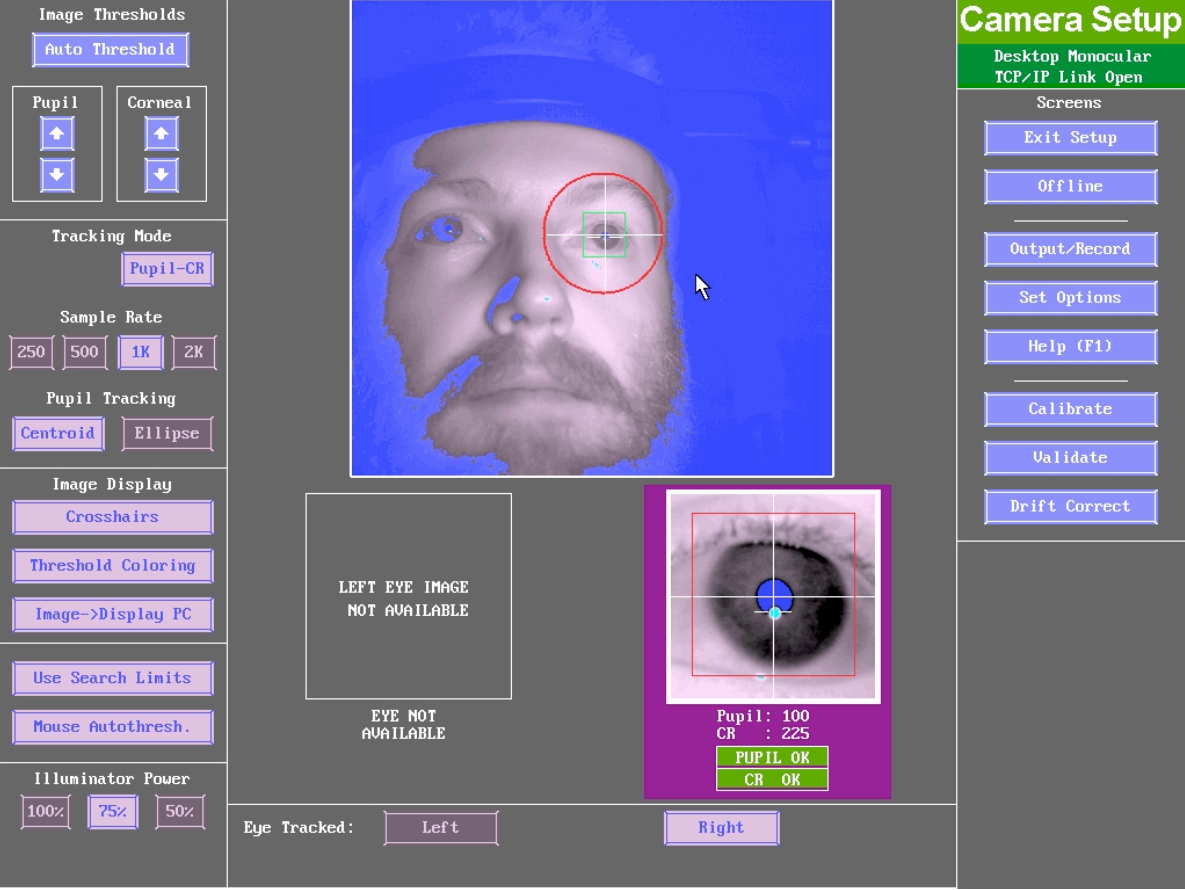
The basics of eye-tracking
Modern eye-tracking techniques
Modern techniques to measure the point of regard:
- Video-based corneal reflection eye trackers

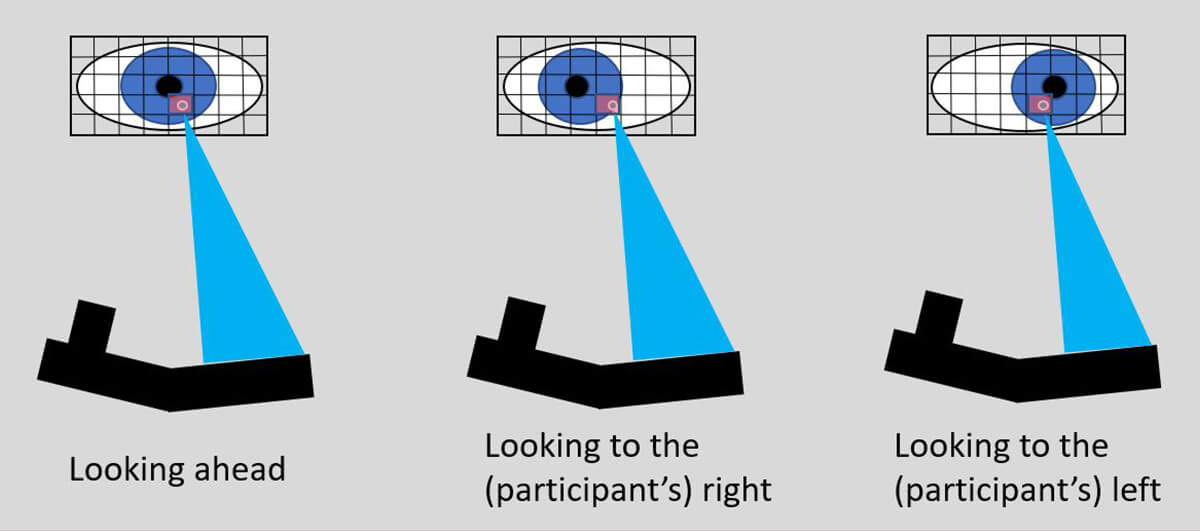
The basics of eye-tracking
Modern eye-tracking techniques
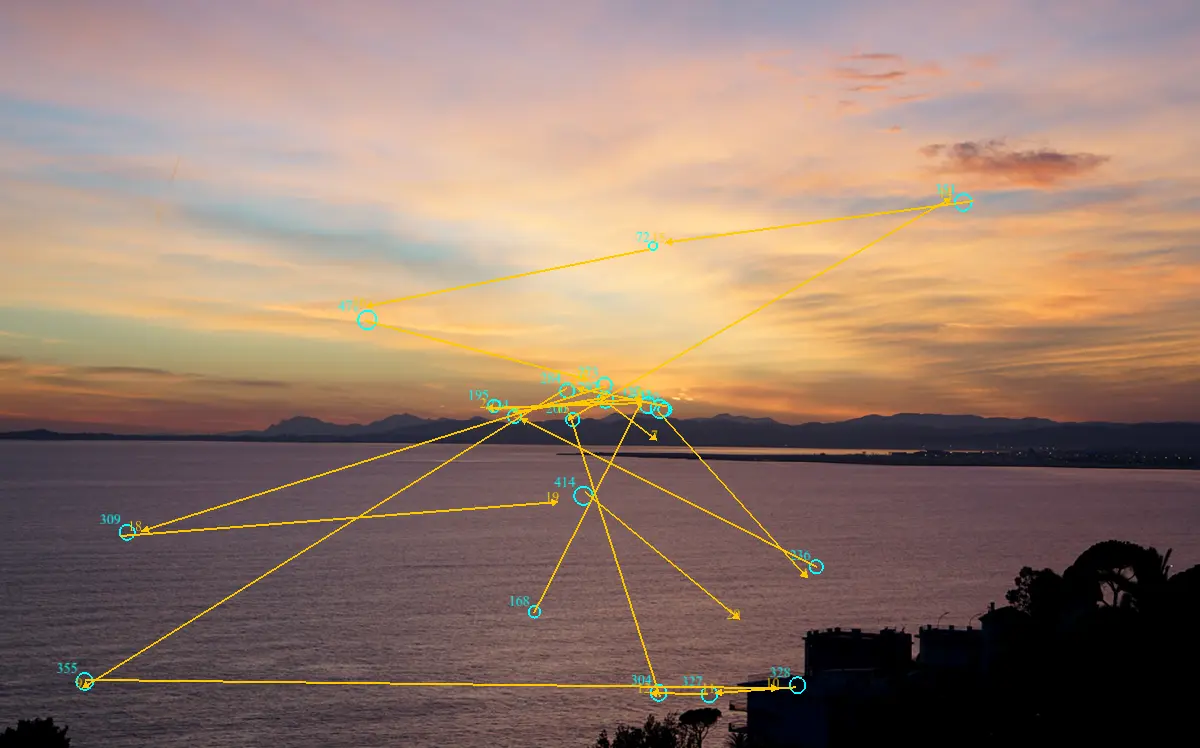
The basics of eye-tracking
Modern eye-tracking techniques
Going beyond eye movements:
- Modern eye trackers can usually provide more information than the point of regard (e.g. pupil size)
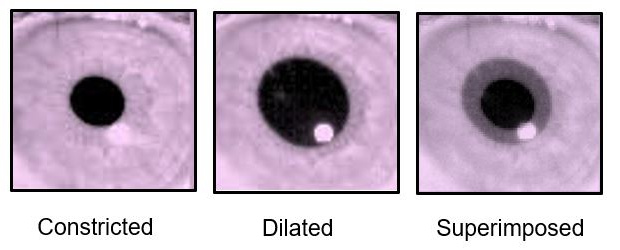
- These measures are being used in psychology-related research fields including language
Eye-tracking and visual attention
Eye-tracking and visual attention
- Eye movements are highly correlated with visual attention
- Attention allows us to selectively process information
- By tracking eye movement, we follow the observer's visual attention...
- ...and gain insight of how the observer is processing the scene
Eye-tracking and visual attention
- During free-viewing of a scene: fixations usually center on interesting/informative areas of the image
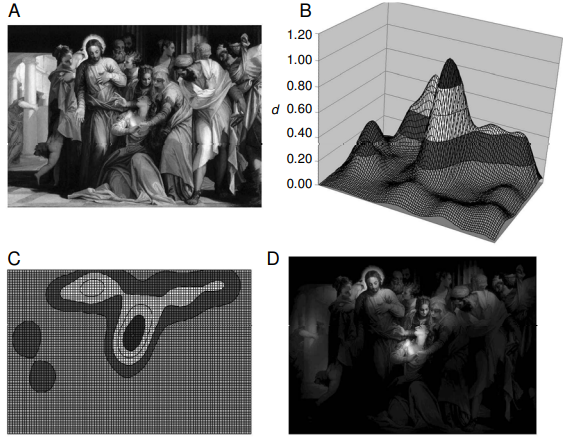
Eye-tracking and visual attention
- During free-viewing of a scene: fixations usually center on interesting/informative areas of the image
Eye-tracking and visual attention
- During free-viewing of a scene: fixations usually center on interesting/informative areas of the image
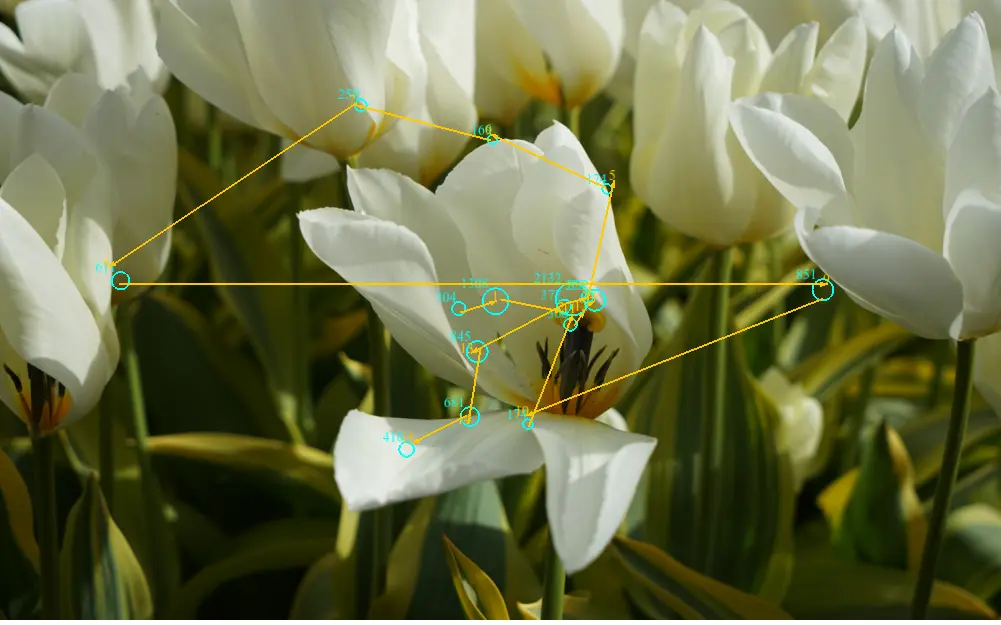
Eye-tracking in language research:
a brief overview
Eye-tracking in language research
Reading
Eye-tracking in language research
Reading
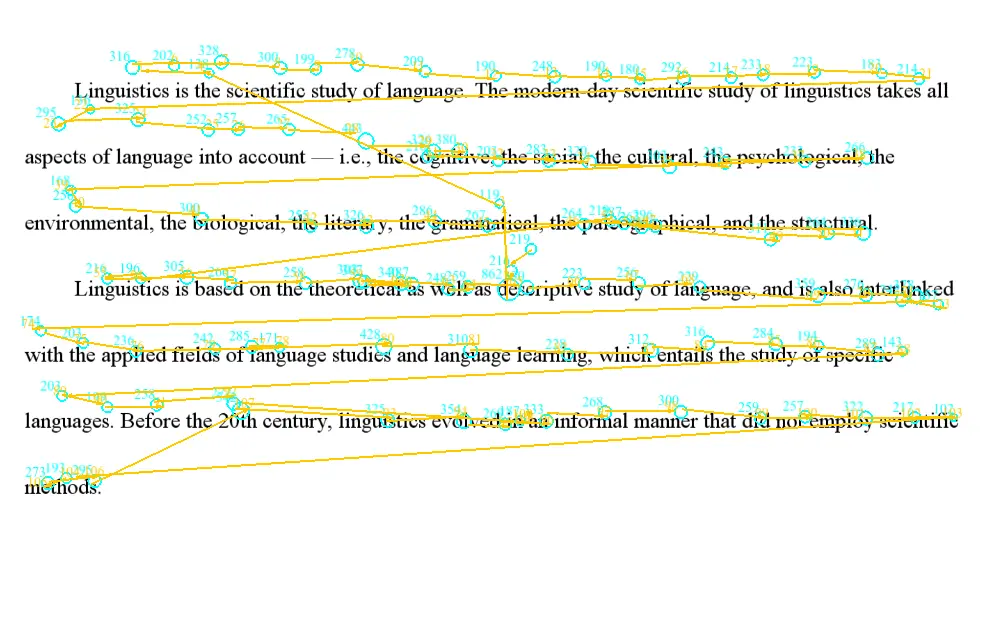
Eye-tracking in language research
Reading
- Fixation pattern during reading is affected by many factors such as legibility and syntactic/conceptual difficulty.
- Research on different levels of language processing:
- Single word; Sentence; Whole/Multiple texts
- Practical/Clinical applications.
Eye-tracking in language research
Spoken language processing
The visual world paradigm
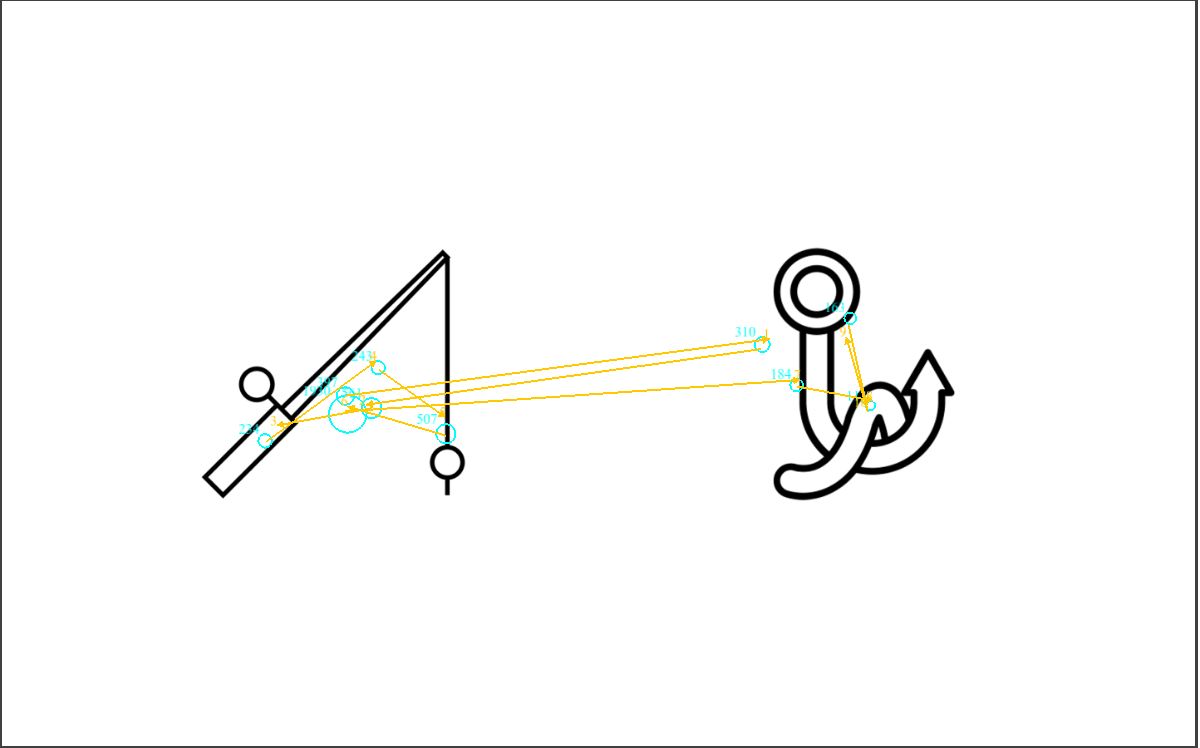
Eye-tracking in language research
Spoken language processing
The visual world paradigm
- Visual display + spoken language comprehension
- Activation of an object's label determines the probability of shifting attention to that object and thus making a saccadic eye movement to fixate it
- Continuous measure of cognition that has a fine temporal resolution
Eye-tracking in language research
Combining eye-tracking and neuroimaging
Electroencephalography (EEG)
- Measuring the brain's electrical activity ("brain waves").
- High temporal resolution on the millisecond scale.
- The brain's response to an event (stimulus onset) is called Event-Related Potentials (ERPs).
Eye-tracking in language research
Combining eye-tracking and neuroimaging
Electroencephalography (EEG)
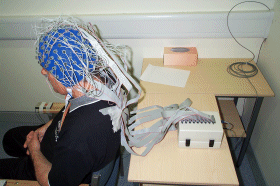
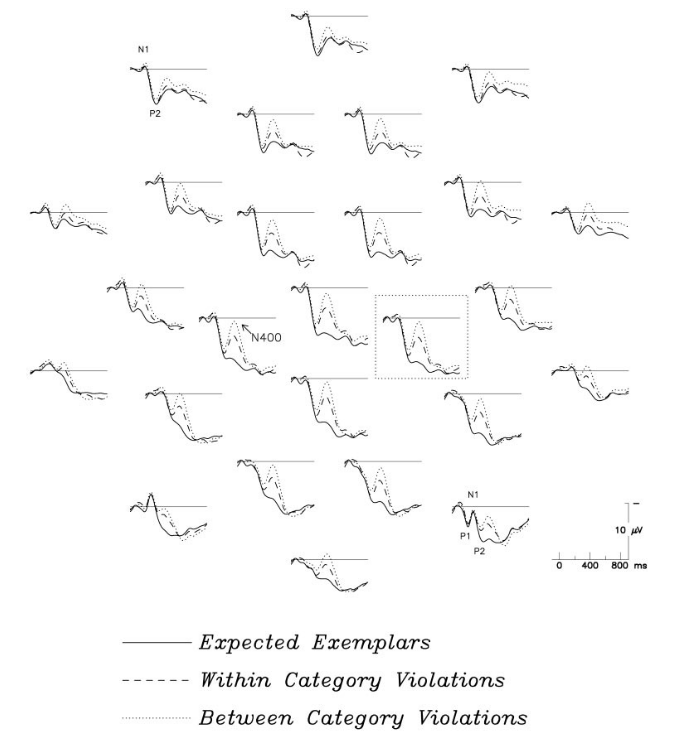
Eye-tracking in language research
Combining eye-tracking and neuroimaging
Functional Magnetic Resonance Imaging (fMRI)
- Measuring the brain's neural activity by measuring associated changes in blood flow.
- High spacial resolution on the millimeter scale.
Eye-tracking in language research
Combining eye-tracking and neuroimaging
Functional Magnetic Resonance Imaging (fMRI)

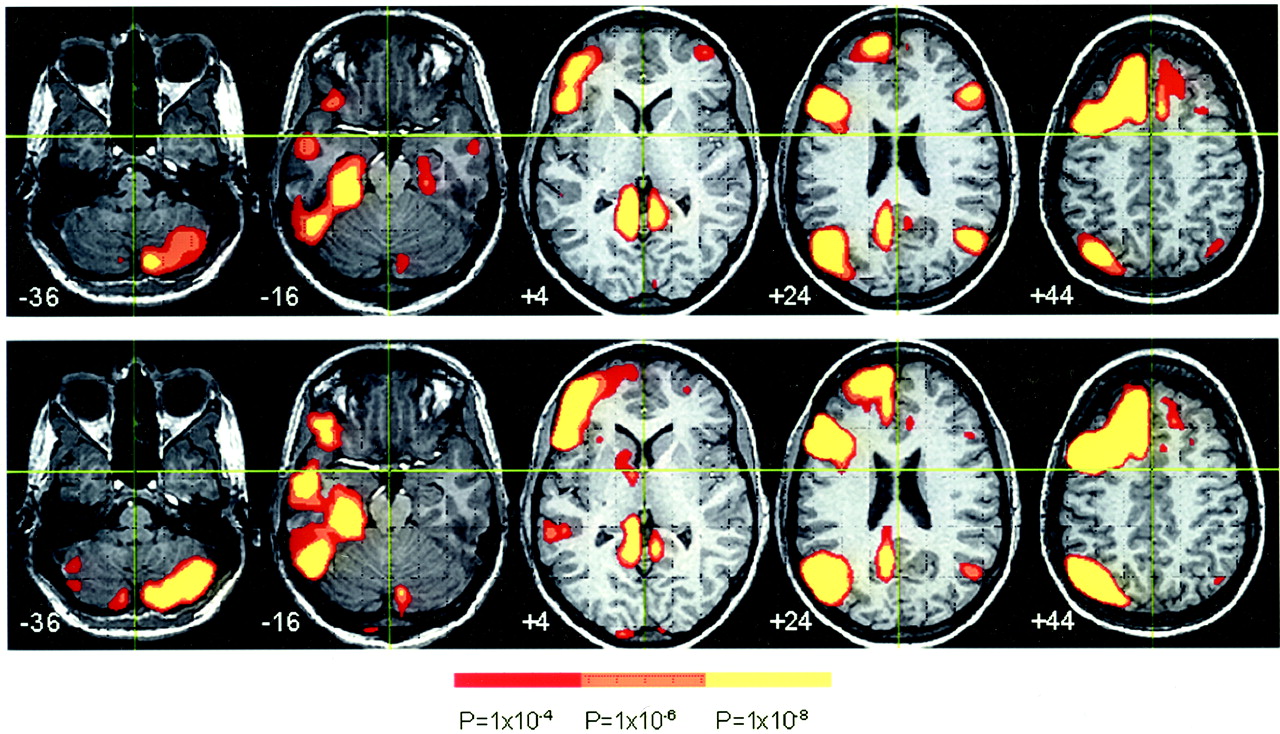
Eye-tracking in language research
Combining eye-tracking and neuroimaging
- Recently, the emergence of co-registration of eye movements and EEG/fMRI data allows researchers to measure neural activity in highly natural tasks:
- Eye movements provide information on what is being looked at, and EEG or fMRI data provide information on the brain's response to that visual information
Eye-tracking in language research
Combining eye-tracking and neuroimaging
Co-registration of eye-tracking and EEG
- Classic language-related ERP effects (e.g. the N400 effect) have been replicated during natural reading in fixation-related potentials (FRPs) (Dimigen et al., 2011).
![]()
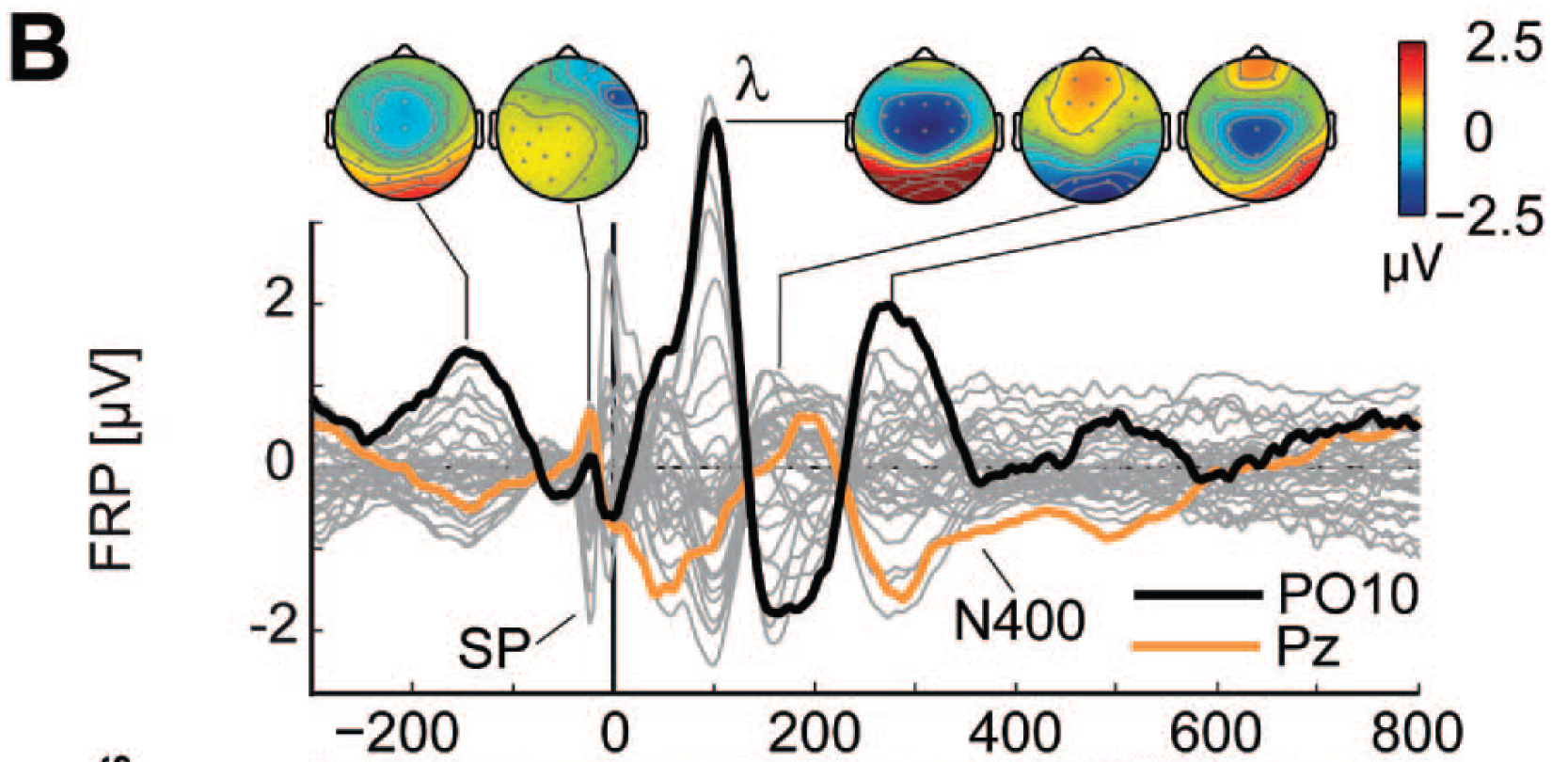
Eye-tracking in language research
Combining eye-tracking and neuroimaging
Co-registration of eye-tracking and fMRI
- Concurrent eye-tracking and fMRI to investigate syntactic parsing and lexical activation during natural reading.
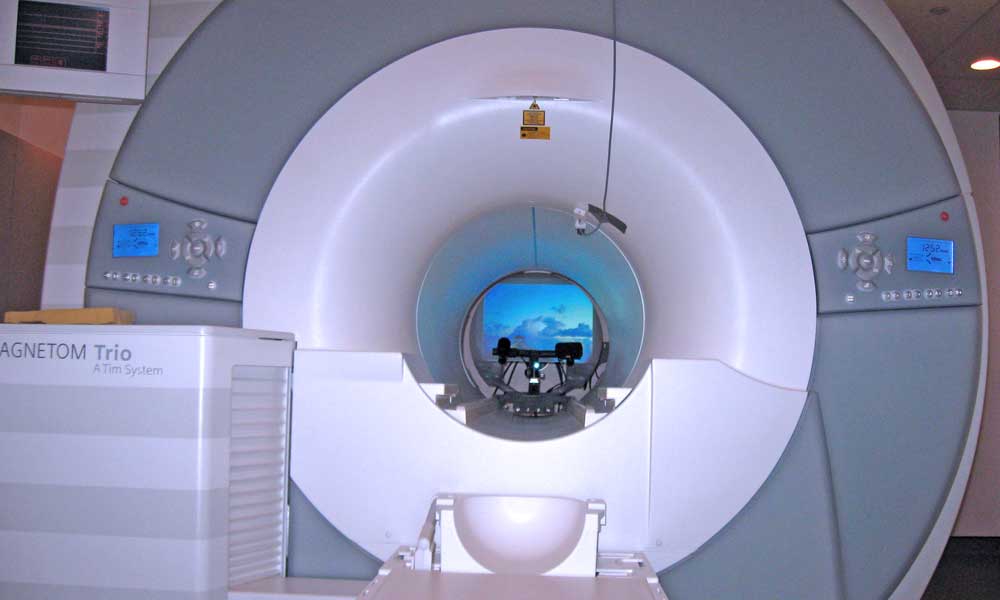
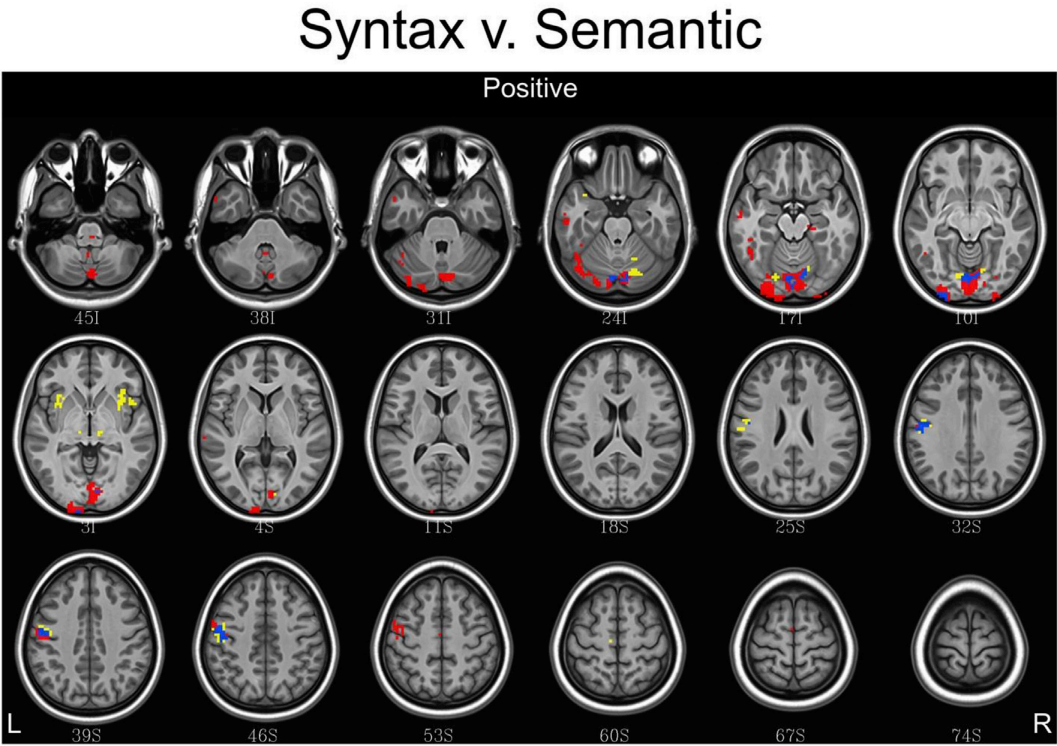
Today's take-home message
- The two types of regular eye movement are fixations and saccades.
- Eye movement is closely associated with visual attention, thus can provide insight into cognition.
- Eye-tracking can be used to study both reading and spoken language processing.
- Recent developments of technology allows researchers to combine eye-tracking and neuroimaging.
Today's take-home message
- The two types of regular eye movement are fixations and saccades.
- Eye movement is closely associated with visual attention, thus can provide insight into cognition.
- Eye-tracking can be used to study both reading and spoken language processing.
- Recent developments of technology allows researchers to combine eye-tracking and neuroimaging.
